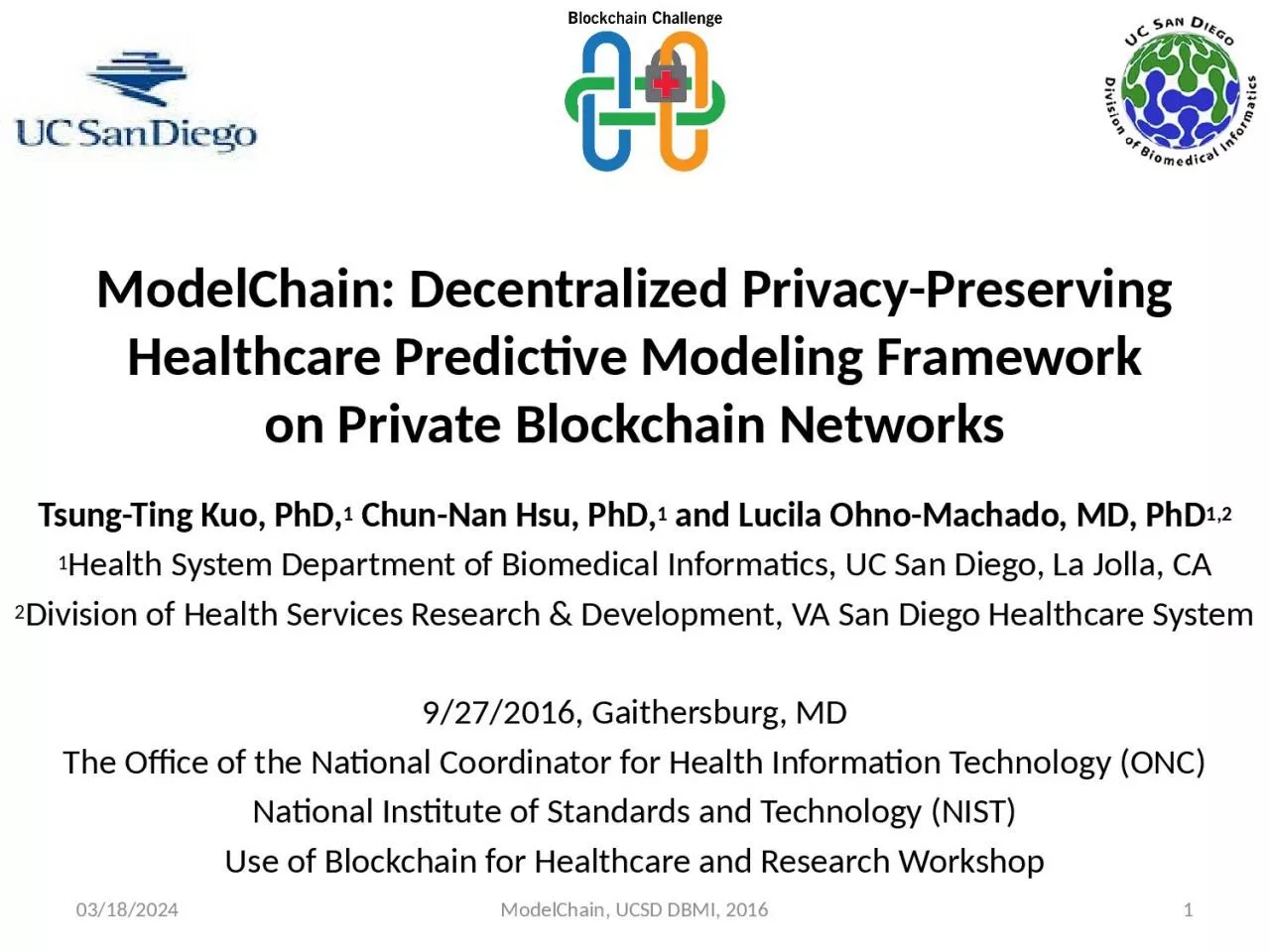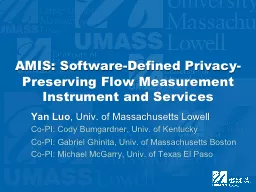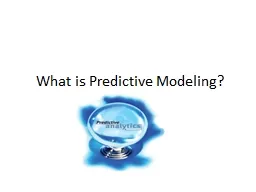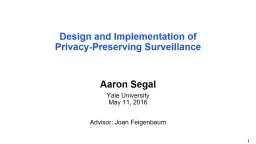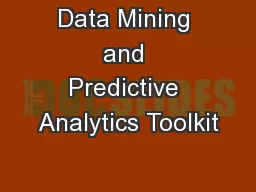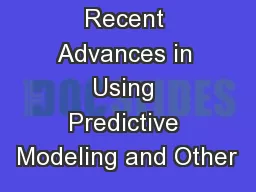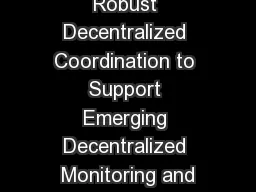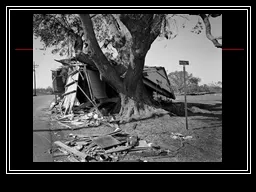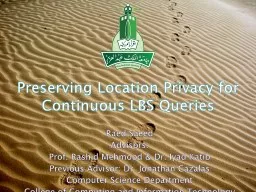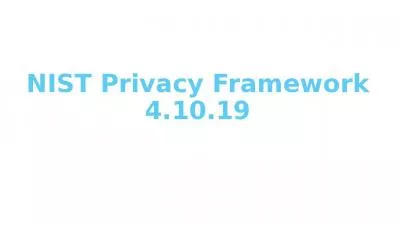PPT-ModelChain: Decentralized Privacy-Preserving Healthcare Predictive Modeling Framework
Author : rosemary | Published Date : 2024-03-15
Private Blockchain Networks TsungTing Kuo PhD 1 ChunNan Hsu PhD 1 and Lucila OhnoMachado MD PhD 12 1 Health System Department of Biomedical Informatics UC San
Presentation Embed Code
Download Presentation
Download Presentation The PPT/PDF document "ModelChain: Decentralized Privacy-Preser..." is the property of its rightful owner. Permission is granted to download and print the materials on this website for personal, non-commercial use only, and to display it on your personal computer provided you do not modify the materials and that you retain all copyright notices contained in the materials. By downloading content from our website, you accept the terms of this agreement.
ModelChain: Decentralized Privacy-Preserving Healthcare Predictive Modeling Framework: Transcript
Download Rules Of Document
"ModelChain: Decentralized Privacy-Preserving Healthcare Predictive Modeling Framework"The content belongs to its owner. You may download and print it for personal use, without modification, and keep all copyright notices. By downloading, you agree to these terms.
Related Documents

